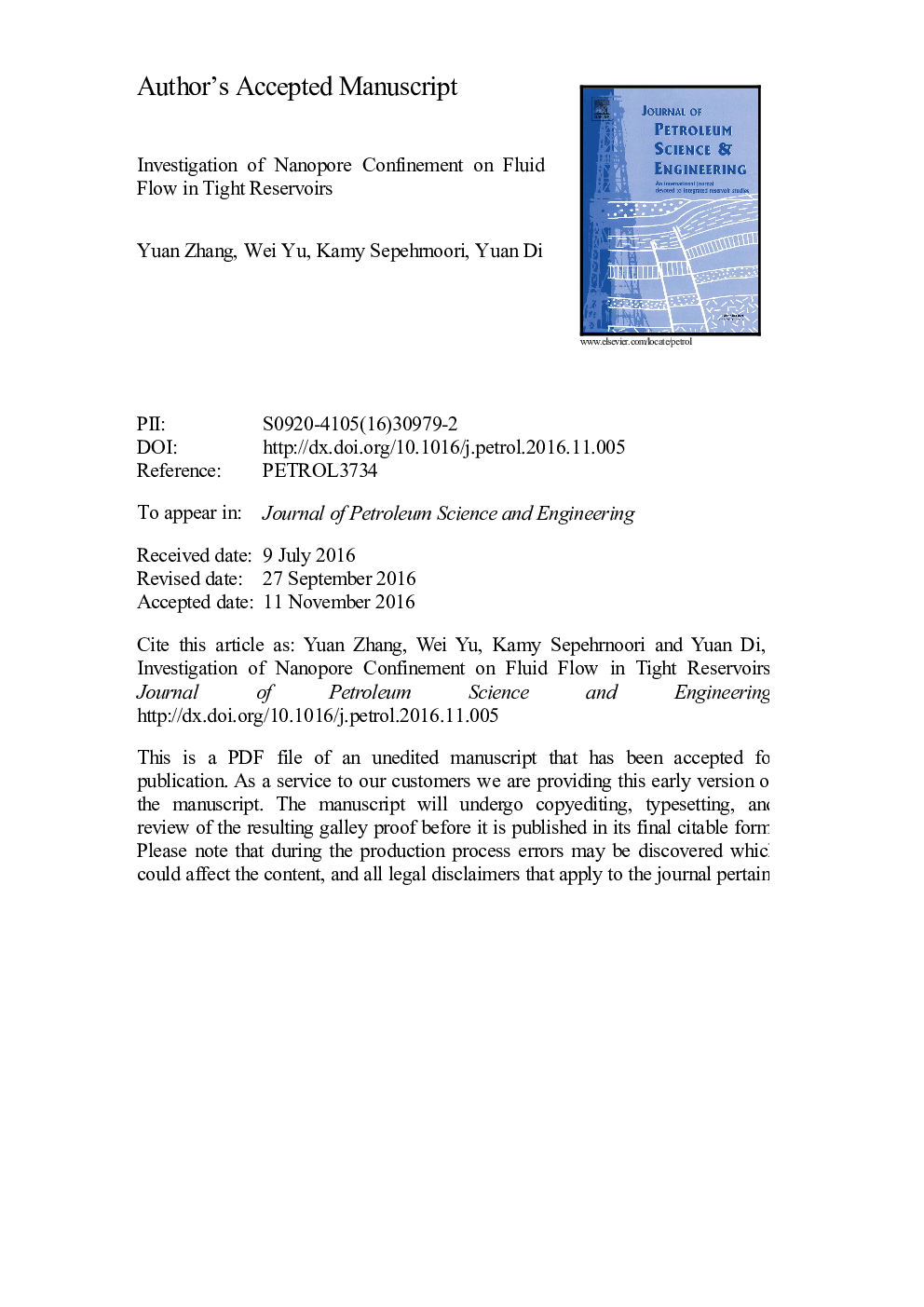| Article ID | Journal | Published Year | Pages | File Type |
|---|---|---|---|---|
| 5484340 | Journal of Petroleum Science and Engineering | 2017 | 24 Pages |
Abstract
The nanopore confinement plays an important role in the phase behavior and well performance in tight oil reservoirs; it impacts the phase behavior, as well as the fluid transport. Conventional phase equilibrium model fails to accurately simulate the complex phase behavior in the nanopores due to large capillary pressure. In this study, we modify Peng-Robinson Equation of State (PREOS) to calculate the black-oil properties including solution gas-oil ratio, viscosity, and formation volume factor by considering the capillary equilibrium. Afterward, we perform a series of sensitivity studies to identify the critical parameters affecting well performance with and without the capillary pressure effect. Five parameters, which are matrix permeability, fracture conductivity, number of fracture, fracture half-length, and bottomhole pressure, are investigated. Finally, we apply this model to analyze the performance for an actual well from the Bakken formation. We divide the nanopore size distribution into five regions, which are randomly distributed in the reservoir model. The role of the nanopore size distribution on well performance analysis is examined in detail. This work provides an improved understanding of the capillary pressure effect on the phase equilibrium and well performance in tight oil reservoirs.
Related Topics
Physical Sciences and Engineering
Earth and Planetary Sciences
Economic Geology
Authors
Yuan Zhang, Wei Yu, Kamy Sepehrnoori, Yuan Di,
